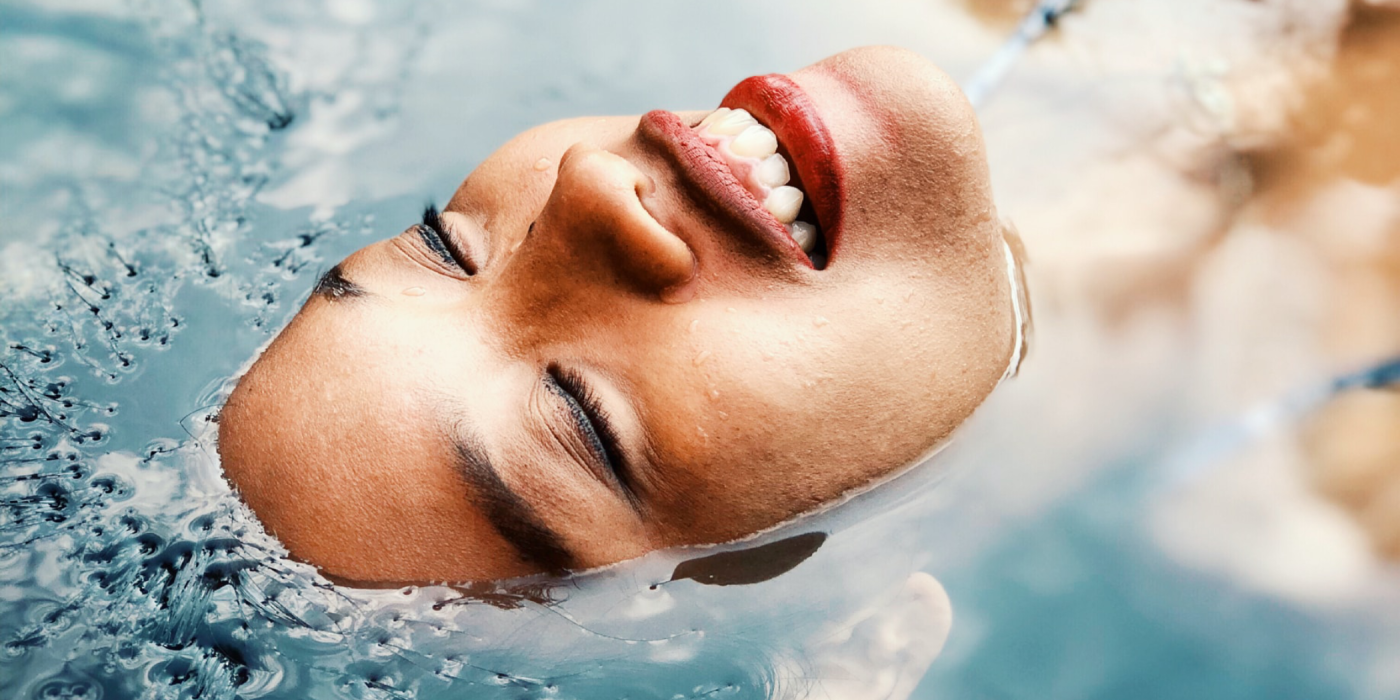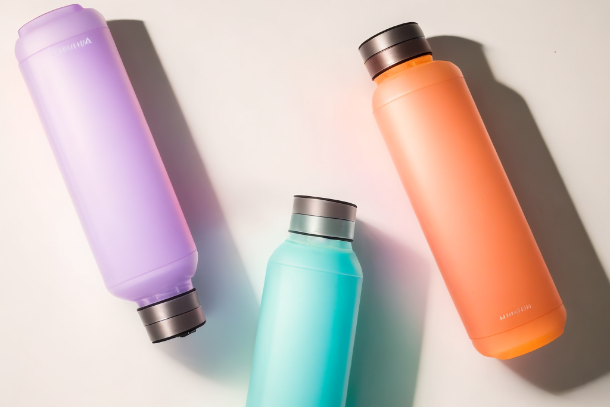A Guide to Floating: The Ultimate Relaxation Technique

In today's fast-paced, always-on world, finding time to relax and unwind is not just a luxury, but a necessity for maintaining our mental and physical health. Countless studies have shown the detrimental impact of chronic stress, including its effects on our mood, productivity, physical wellbeing, and even our longevity.
The path to relaxation, however, is not a one-size-fits-all journey. Some of us may find solace in a quiet cup of tea, while others may require more active pursuits such as running or yoga. The key is to identify what works best for you, and incorporate it into your daily or weekly routine.
Introducing Floating as a Relaxation Technique
But what if we told you there's a potent relaxation technique you may not have heard of? A technique that requires little effort, but promises profound physical and mental relaxation? Enter the concept of floating.
Floating, or flotation-REST (Restricted Environmental Stimulation Therapy), is an advanced relaxation technique that provides an environment conducive to intense relaxation and deep introspection. Participants float effortlessly in a specially designed tank filled with warm, salt-saturated water, completely devoid of external stimuli.
But, is floating merely a fleeting wellness fad or does it have genuine therapeutic potential? And how does it compare to other relaxation techniques? This guide will delve into the science, benefits, and practicalities of floating as the ultimate relaxation technique. Whether you're looking to enhance your relaxation routine or explore new avenues to mental serenity, we invite you to embark on this journey of discovery with us.
What is Floating?
A Brief History
Floating, also known as floatation therapy or sensory deprivation therapy, was developed in the mid-1950s by Dr John C. Lilly, a neuroscientist interested in understanding the effects of sensory deprivation on the human brain and psyche. It has since evolved into a science-backed relaxation method, used worldwide for its numerous health and wellness benefits.
The practice entails floating in a specially designed tank, often referred to as a sensory deprivation tank or an isolation tank. These tanks are filled with a water and Epsom salt solution, allowing the individual to float effortlessly on the surface.
The Science Behind Floating
Understanding the science behind floating is crucial to appreciating its status as a proven stress-relief technique.
The Role of Gravity
The floatation environment removes gravity's pressure on the musculoskeletal and nervous systems. This lack of stimuli frees the brain from processing vast amounts of information, resulting in a deep state of relaxation.
The Epsom Salt Effect
The water in the tank is saturated with Epsom salt, also known as magnesium sulphate. Absorbing magnesium through the skin can aid in reducing muscle tension, relieving pain and inflammation, and promoting the production of serotonin, a mood-lifting chemical in the brain.
The Theta State
During a float session, your brain gradually shifts from its normal waking beta state to slower alpha waves and often to theta waves -- the brain waves associated with deep meditation, creativity, and dreaming. This transition stimulates a profound relaxation response, promoting stress reduction and improved mental clarity.
In essence, floating provides a unique environment that allows the body and mind to enter a deep state of relaxation that is otherwise hard to achieve in our busy modern lives.
The Process of Floating
Getting Started with Your Floating Session
When you arrive at a float centre, you are usually provided with a private room equipped with a floatation tank, shower, and amenities. Here's a basic rundown:
-
Showering: You are advised to take a pre-float shower to remove oils, lotions, and other substances that could contaminate the tank.
-
Entering the Float Tank: After showering, you gently enter the tank, which is filled with a high-concentration Epsom salt solution. The solution allows your body to float effortlessly.
-
The Float: Once you settle into the tank, your body will naturally float on the surface. You can choose to have the tank closed for a fully sensory-deprived experience or leave it slightly open if you feel uncomfortable. The session usually lasts for about 60-90 minutes.
-
Ending Your Session: Soft music or a gentle vibration will signal the end of your session. After exiting the tank, you shower again to rinse off the salty water.
Addressing Common Concerns
Claustrophobia
Floating can initially seem daunting for those who are claustrophobic; however, the tanks are surprisingly spacious. The idea is to create an environment devoid of distractions, which means darkness and enclosure, but you are always in control and can leave the lid open if it makes you feel more comfortable.
Sanitation
The high concentration of Epsom salt in the float tanks makes them inhospitable to bacteria. Additionally, most float centres implement a rigorous cleaning process that includes filtration and disinfection between each session. This ensures that the tank and water are thoroughly clean for each user.
The Multifaceted Benefits of Floating
Floating, often referred to as sensory deprivation or float therapy, is much more than a simple relaxation technique. Let's delve into the manifold benefits it offers.
Relaxation and Stress Reduction
Floating quite literally lifts the weight off your shoulders. By creating an environment free of external stimuli, your body and mind can enter a state of deep relaxation. The buoyancy of the Epsom salt-infused water allows your muscles to fully unwind, reducing physical tension and promoting a profound sense of calm.
Scientific research corroborates these claims. A 2018 study in the Journal of Complementary and Alternative Medicine found that floating significantly reduced stress in a group of 50 participants.
Enhanced Sleep Quality
As your stress levels decrease and your mind enters a deeply relaxed state, the quality of your sleep can significantly improve. Those who float regularly often report longer, more restful nights. A 2015 study published in BioMed Central Complementary Medicine showed that patients suffering from stress-related insomnia found relief through regular float therapy.
Boosted Creativity
When your mind is not constantly processing external stimuli, it has the opportunity to wander freely, often leading to a boost in creativity. Many artists, writers, and other creative individuals have reported that ideas seem to flow more freely after a float session.
Personal testimonials support this, too. Renowned artists and entrepreneurs often speak about the "Eureka" moments they've had while floating, underlining this technique as a tool for innovation and idea generation.
The benefits of floating extend far beyond relaxation. It's a holistic practice that can rejuvenate your mind, body, and spirit, laying the groundwork for enhanced well-being and a more balanced lifestyle.
How Floating Can Improve Mental Health
Mental Health Benefits of Floating
Floating, also known as sensory deprivation or float therapy, offers a multitude of benefits for mental wellbeing. The mental tranquillity achieved during floating sessions can contribute significantly to overall mental health.
Reduction of Anxiety
With the fast-paced lives we lead, anxiety has become a common issue. Floating has shown promise as a potent antidote. The serene, distraction-free environment inside a float tank allows the mind to slow down, ultimately helping in reducing anxiety levels. This calmness extends beyond the float session, aiding in long-term anxiety management.
Enhancement of Mood
In addition to reducing anxiety, floating can also enhance your mood. The profound relaxation and solitude experienced during a float session can trigger the release of endorphins, often referred to as 'feel-good hormones'. This natural mood boost can persist well after the session concludes, promoting overall emotional wellbeing.
Improved Focus
The world around us is filled with distractions. Floating provides a unique environment where these distractions are minimized. As a result, the mind can focus more intensely, helping improve mental clarity and concentration. This heightened focus can enhance productivity in everyday tasks and creative pursuits.
Scientific Studies and Testimonials
Multiple scientific studies have highlighted the mental health benefits of floating. For instance, a study published in the Journal of Complementary Medicine demonstrated a significant reduction in anxiety and improvement in mood among participants following regular floating sessions. Additionally, numerous personal testimonials attest to the positive impact of floating on mental health. These individuals have reported experiences of enhanced focus, mood uplift, and anxiety relief post their float sessions. As each person is unique, the exact benefits can vary, but the overarching positive effects on mental wellbeing remain consistent.
Comparing Floating to Other Relaxation Techniques
Floating vs. Yoga
Floating and yoga both encourage a relaxed state of mind and a connection to your body. However, yoga demands physical flexibility and strength, and a certain amount of concentration to maintain postures. With floating, your body is completely supported by the saltwater solution, promoting total physical relaxation without any effort.
Key Differentiator:
Unlike yoga, floating doesn't require any physical exertion or flexibility, making it more accessible to people with physical limitations.
Floating vs. Meditation
Both floating and meditation seek to induce a state of deep mental relaxation. However, meditating can often be challenging, especially for beginners, due to distractions or difficulty focusing. Floating creates an environment free from external stimuli, which can make achieving a meditative state easier and more profound.
Key Differentiator:
Floating provides a distraction-free environment, which can help even beginners to achieve a meditative state more easily.
Floating vs Massage
A massage offers stress relief by releasing tension in the muscles. Floating, on the other hand, alleviates physical and mental stress simultaneously. While massage works on the muscles directly, floating enables the body to relax entirely, potentially releasing tension even in hard-to-reach areas of the body.
Key Differentiator:
Floating allows for simultaneous physical and mental relaxation and can release tension even in areas a massage might miss.
In conclusion, each of these techniques offers unique benefits, but floating stands out as it requires no effort is accessible to everyone, and promotes both physical and mental relaxation in a distinctive manner. For many, floating could be the ultimate relaxation technique they've been searching for.
Getting Started with Floating
Embarking on your floating journey is an exciting step towards attaining ultimate relaxation. Here, we will guide you on finding the best float centres in the UK, and help you navigate through the pricing and other practical aspects of starting a floating practice.
Finding a Reputable Float Centre
Searching for a reputable float centre is your first step. The UK houses numerous float centres offering top-notch services, but you want to ensure you select the one that best fits your needs and comfort. You can use online resources, such as "Where to Float", a comprehensive directory providing information about float centres across the UK. Read reviews and check ratings to make an informed decision.
Ensure the centre prioritises hygiene, offers good customer service, and has a peaceful ambiance. Some top centres include London Floatation Centre, Floatworks, and The Float Spa in Hove, each renowned for their high-quality service.
Pricing and Frequency
Float sessions vary in pricing depending on the centre, the location, and the length of the session. On average, a single float session might cost between £45 to £70. Many centres offer discounts for package deals or memberships, making it a more affordable option if you intend to float regularly.
The frequency of floating is largely a personal decision, but many find that starting with a session once a week for the first month can help acclimatise to the experience. Once comfortable, you can adjust your schedule based on your personal needs and budget.
Other Practical Aspects
Remember, floating is a personal journey of relaxation and self-discovery. Don't rush the process. Take your time to adapt, remain open-minded, and embrace the tranquillity it brings to your life.
Preparation and Aftercare for Floating
Pre-Float Preparation
Pre-Float Mindset
A calm mindset before your float can make a significant difference to your experience. It's advisable not to rush to your appointment; give yourself ample time to arrive at the float centre without stress. Approach the session with an open mind, and avoid forming any expectations.
Physical Preparedness
Avoid caffeine or other stimulants before your session, as they can interfere with your ability to relax. It's also best not to shave or wax before floating, as the salt water can irritate fresh cuts or skin abrasions. A light meal about an hour before floating is advisable to avoid the distraction of hunger during your session.
Post-Float Aftercare
Hydration and Nutrition
After floating, you should drink plenty of water to stay hydrated. Some people also find eating a light, healthy meal beneficial to grounding themselves post-float.
Rest and Reflect
Take some time to rest and reflect on your experience. A float journal could be a helpful tool to record thoughts, feelings, or any insights gained during the session.
Handling Potential Side Effects
While floating is generally a relaxing and safe practice, some individuals might experience mild side effects such as dizziness or nausea, mostly due to the detoxifying effects of the Epsom salts used in the water. These effects are usually temporary and can be minimised by maintaining proper hydration. If any side effects persist, it is recommended to seek advice from a healthcare professional. Remember, it's all part of the process of finding the ultimate relaxation technique that works best for you.
Unravelling the Relaxation Technique
In this article, we've unravelled the therapeutic world of floating as a unique, science-backed relaxation method. We began with a comprehensive understanding of what floating entails, exploring its origins and the underpinning science which propels it as a leading stress-relief technique. The step-by-step process was outlined, quelling common concerns related to claustrophobia, sanitation, and more.
We shone light on the myriad benefits associated with this practice, spanning from enhanced relaxation and improved sleep to increased creativity. The significant impact of floating on mental health was underscored, emphasising its potency in reducing anxiety, elevating mood, and boosting focus.
In the context of relaxation methods, we positioned floating in comparison with other popular techniques such as yoga, meditation, and massage, pointing out its unique advantages. To get you started on this journey, we provided a guide on locating reputable float centres in the UK, discussing practical aspects such as pricing and session frequency.
Lastly, we shared some valuable tips on pre-float and post-float practices to ensure you can extract the maximum benefits from your experience.
Final Thoughts and Encouragement
Floating has proven to be more than a fleeting trend; it's a pioneering practice backed by both scientific research and a multitude of personal testimonials. Its potential to create a deep sense of relaxation, coupled with an array of mental and physical benefits, makes it a worthy addition to anyone's wellness routine.
If you're in the UK and are considering adding a new relaxation technique to your repertoire, there's never been a better time to explore floating. From the tranquil stillness of the float pod to the post-float euphoria, it's an experience worth diving into. So, let go, float, and discover the ultimate relaxation that awaits you.
Related to this article are the following:
- Soothing Waters: Uncovering the Relaxation Benefits of Water Therapy
- Unlock Your Athletic Potential: The Power of Sports Massage for Performance and Recovery
- Unlocking the Power of Healing with a Deep Tissue Massage
- Experience the Warmth: Uncovering the Benefits and Techniques of Hot Stone Massage
- Experience the Multifaceted Benefits of Swedish Massage
I do hope you have enjoyed this article and hope that you will subscribe to my newsletter so you can get the latest information about all things naturally relaxing.
Stay in touch, join the Naturally Relaxing Newsletter
Newsletter Signup
Post Your Comments
or post as a guest
Be the first to comment.
Latest articles in Water
Idea is to do article on waterfall

Finding the Perfect Swimming Hole: Your Comprehensive Guide

Exploring Sea Deities Around the World: A Dive into Global Mythologies

Harvesting Rainwater: A Comprehensive Guide to Rain Barrels and Water Storage

Creating Resilient Gardens: An Expert Guide to Drought-Tolerant Landscaping






